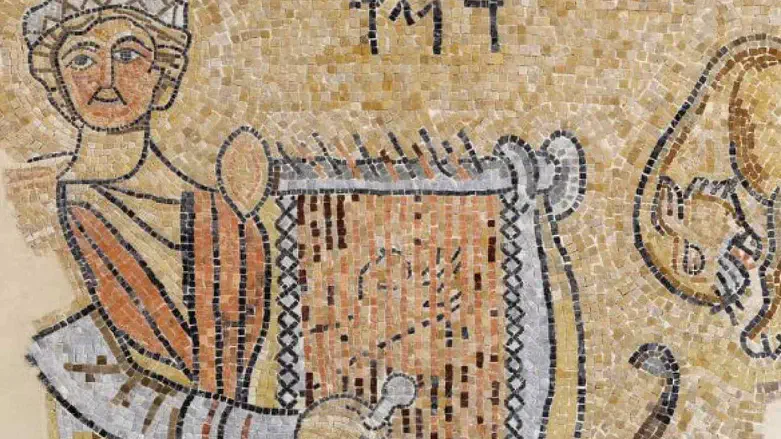
Avi Abelowis the host of the Pulse of Israel daily video/podcast and the CEO of 12Tribe Films Foundation.
Blinken was once again in Israel, loudly joining the significant international pressure on Israel to withdraw its forces and agree to a ceasefire with Hamas. However, a ceasefire at this stage would likely mean appeasement, leaving Israeli hostages in peril and allowing Hamas to regain control in Gaza. Such a decision would embolden Israel's adversaries and hinder the country from achieving its key objectives: dismantling Hamas and ending its rule over Gaza.
The pressure on Israel is based on a skewed narrative that often overlooks Gaza's rich Jewish history. Contrary to popular belief, Gaza's connection to Judaism stretches back centuries before the advent of Islam. The Jewish presence in Gaza is not only a historical fact but also a crucial part of the region's identity, one that is frequently erased from modern discourse.
Gaza's Jewish Roots: A Historical Perspective
Gaza is often viewed through the lens of contemporary conflicts, overshadowing its ancient Jewish heritage. Historically, Gaza was not always Arab. The region has deep Jewish roots, with a presence dating back to Biblical times. This history is not just a relic of the past but a testament to the enduring connection between the Jewish people and this ancient city - and to its land.
In fact, in a 2012 statement on Egyptian TV, Hamas Minister of Interior and National Security, Fathi Hammad, acknowledged that many of today's Palestinian Arabs are of Egyptian and Saudi origin, further highlighting the diverse and non-indigenous roots of the region's Arab population.
Gaza in Biblical and Temple Times
The Bible identifies Gaza as one of the five Philistine cities, yet Jewish communities also thrived there during the First and Second Temple periods. Gaza was more than just a Philistine stronghold; it was a significant hub for trade and culture, where Jewish life flourished. The notion that today's Palestinian Arabs are descendants of the Biblical Philistines lacks any historical support, as the Philistines were a seafaring people, distinct from the Arab inhabitants of the region today. (The Bible calls them "Philistines" a word meaning invaders, because the group originated in the Greek islands and invaded the Gaza region from the sea. Palestinian Arabs have also claimed to be descendants of the long-disappeared pagan Canaanites and Jebusites, ed.)
Rediscovering Gaza's Jewish Heritage
One of the most compelling pieces of evidence of Gaza's Jewish past is the mosaic found in the ancient synagogue of Gaza in the Rimal district of Gaza City, discovered in 1965. Dating back to 508 C.E., this mosaic is a vivid reminder of Gaza's Jewish community long before the rise of Islam. Today, the mosaic is at the Israel Museum and a copy is displayed at the Museum of the Good Samaritan in Israel, symbolizing the deep Jewish roots in the region. Israeli soldiers prayed there for the first time in decades in November 2023.
Until the 1980s, one of the pillars of the Great Mosque of Gaza in the Daraj quarter of Gaza City displayed the inscription "Hanania Bar Yaakov" in Greek and Hebrew. Above it was engraved a lamp with a shofar on one side and an etrog on the other side.
Renowned French researcher Clermont Ganneau, who served as the French Consul of Jaffa in 1880-1882 and later as the Consul General in Jerusalem, was the one to discover these findings in 1870.
It is estimated that the main synagogue of the Gaza community in the Roman period and in part of the Byzantine period - the period of the Mishna and the Talmud – stood in the place of the mosque. There was a fairly large Jewish community in Gaza at that time.
Rabbi Israel Najara and the Song of Ka Ribon
In the early 17th century, Rabbi Israel Najara, Chief Rabbi of Gaza City, composed the hymn "Ka Ribon," a song that has been cherished in Jewish liturgy for centuries and is sung at the Sabbath eve meal. Rabbi Najara's legacy highlights the spiritual and cultural significance of Gaza to the Jewish people during that period.
The Spanish Inquisition and Gaza's Jewish Revival
Following the Spanish Inquisition and the expulsion of Jews from Spain in 1492, many Sephardic Jews found refuge in the Ottoman Empire, including in Gaza. These Jewish settlers revitalized the city's Jewish community, contributing to its economic and cultural life, establishing synagogues, and maintaining religious institutions.
Jewish Life in Gaza in the Early 20th Century
Jewish life in early 20th-century Gaza was vibrant, despite the challenges posed by rising tensions and violence. The Jewish community played a crucial role in the city's development until the increasing hostilities forced many to leave, severing a centuries-old connection.
The 1970s: A Return to Gaza
In the 1970s, under Prime Minister Yitzhak Rabin, Israel made efforts to re-establish a Jewish presence in the Gaza Strip as a strategic move to secure the region. However, international and internal pressure eventually led to Israel's disengagement from Gaza in 2005, resulting in the removal and destruction of all the vibrant Jewish communities there.
Acknowledging Gaza's Jewish History
The international community often neglects the Jewish connection to Gaza, overlooking a crucial part of the region's history. Recognizing this heritage is essential for a balanced understanding of the region and its complexities. Acknowledging Gaza's Jewish history is not only about historical accuracy but also about ensuring that this rich heritage is preserved and respected.
As Israel contemplates its future actions in Gaza, it is imperative to consider the region's Jewish history. Reclaiming Gaza as a Jewish region is not only a strategic necessity but also a historically just and moral decision.
In the face of ongoing conflicts and international pressure, it is time to remember and restore Gaza's Jewish legacy. This heritage, deeply embedded in the city's history, must be recognized and respected as part of any future resolution for the region.
As Israel is pressured to propose a solution for "the day after '' Israel destroys Hamas in Gaza, this Jewish history of Gaza can no longer be ignored or denied by Israel or the Jewish people.
Gaza is more Jewish than Arab and that must be taken into consideration.
While international pressure is already being placed upon Israel to make Gaza Jew-free again after the war, there are security voices in Israel, like IDSF Director Amir Avivi, who clearly explain the security need for Israel to resettle Gaza with Jewish communities. He and other experts aver that only with Jewish communities in Gaza can Israel secure Israel, returning to the security understanding of PM Rabin and his left-wing Labor government back in the 1970s.
It is time to make Gaza Jewish again, not just as the only security solution to end the terror against us from Gaza for good, but because it is historically Jewish, and that is the just, moral, and historically accurate thing to do.
